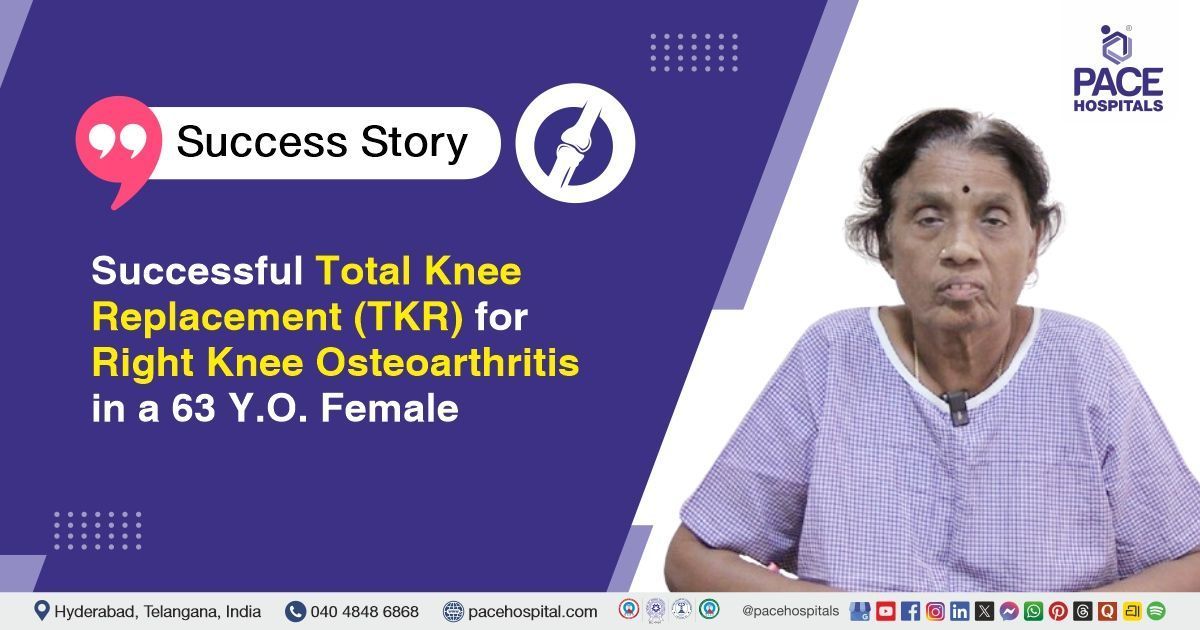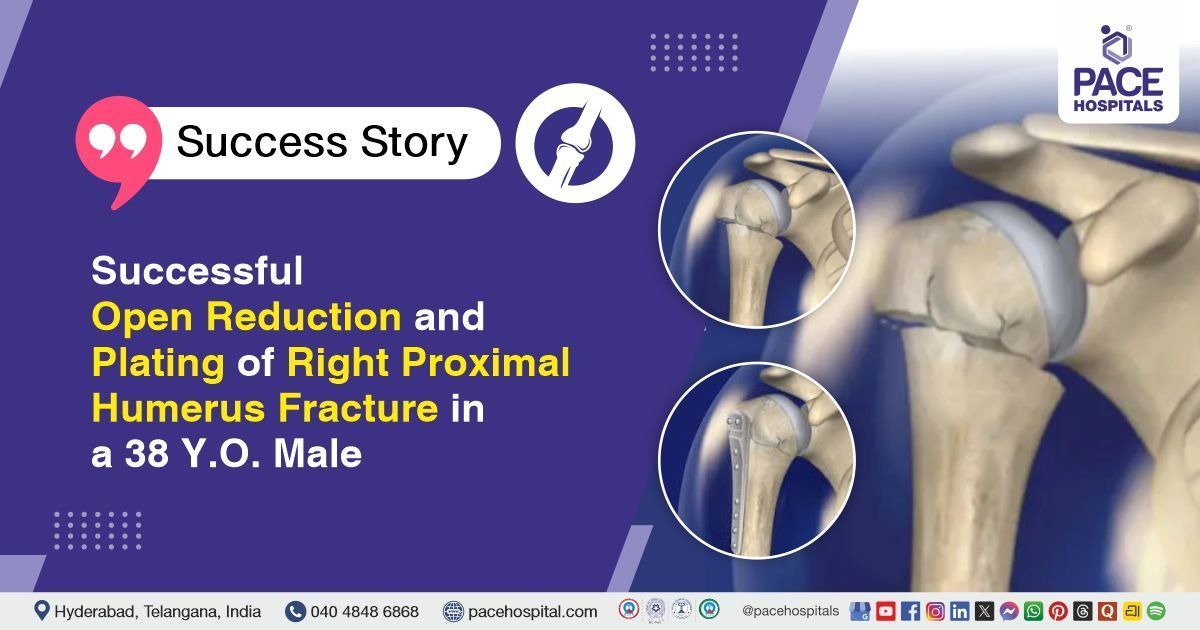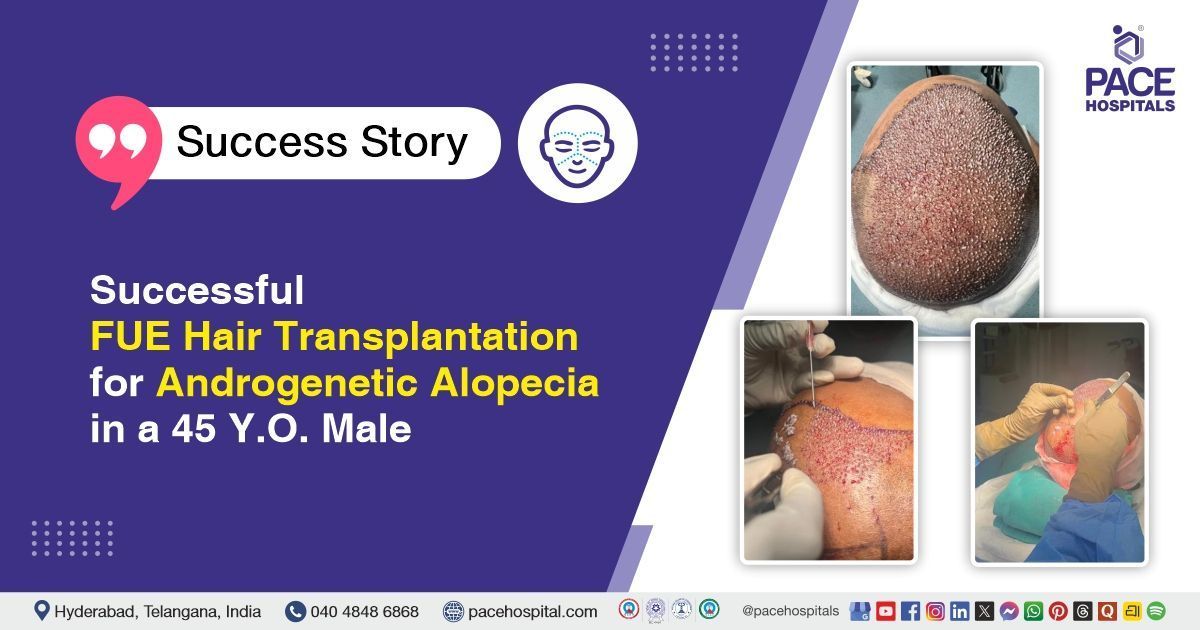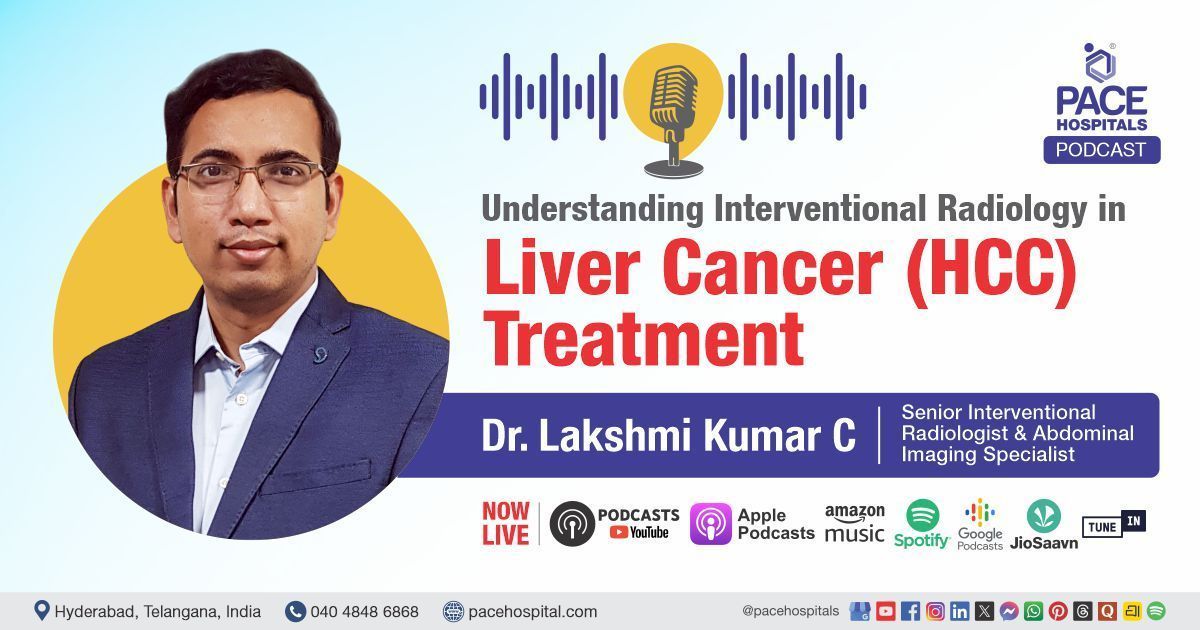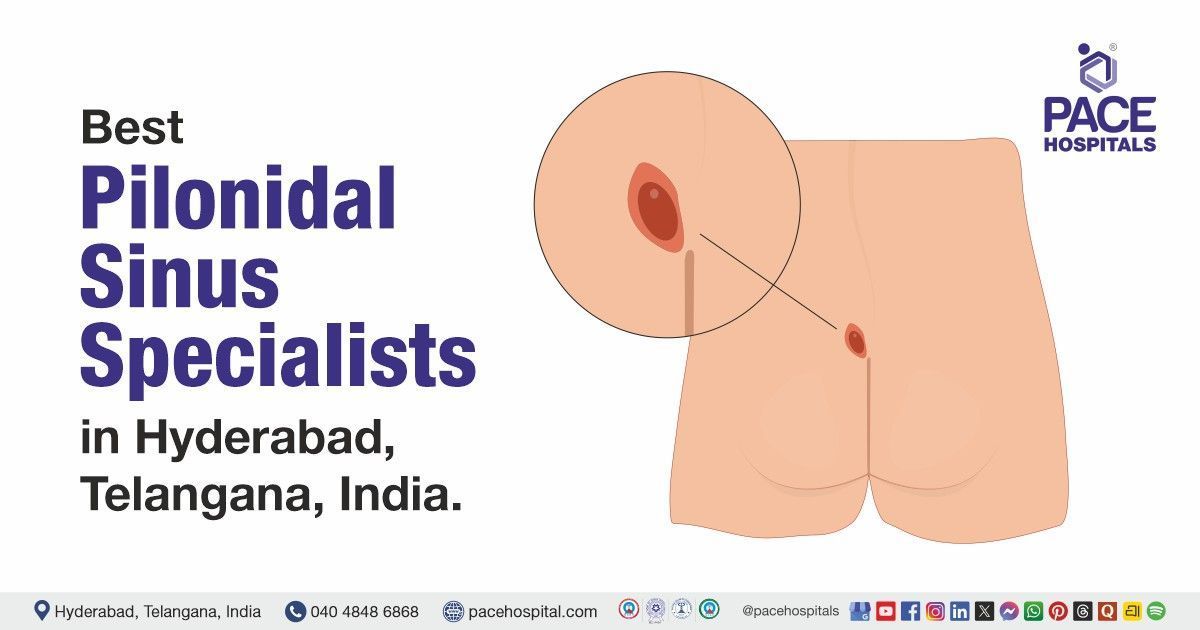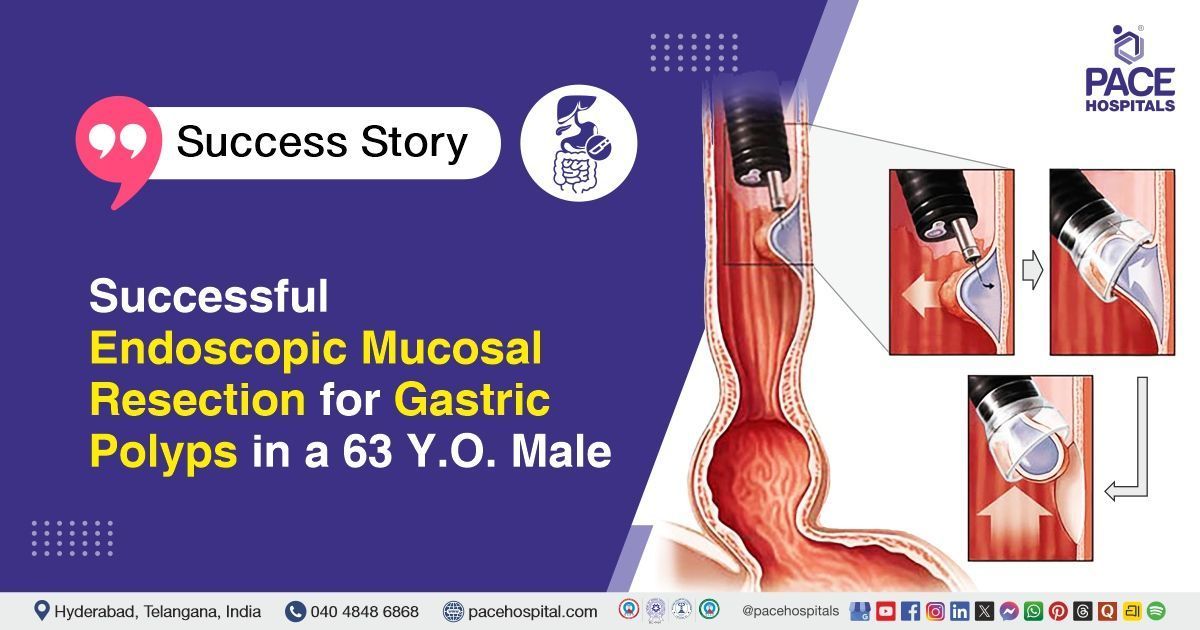Successful URSL and DJ Stenting for Right PUJ Obstruction with Renal Calculus in a 62 Y.O. Male with Corrosive Gastropathy
PACE Hospitals
The PACE Hospital's expert Urology team successfully performed a Right Ureteroscopic Lithotripsy (URSL) with Double J Stenting (DJS) on a 62-year-old male patient diagnosed with right pelviureteric junction (PUJ) calculus, right renal calculus, gastric ulcer, and corrosive gastropathy. The procedure aimed to remove obstructive ureteric stones, relieve urinary tract obstruction, and ensure adequate ureteral drainage through stent placement.
Chief Complaints
A 62-year-old male patient with a
body mass index (BMI) of 22.2 presented to the Urology Department at
PACE Hospitals, Hitech City, Hyderabad, with complaints of right loin to groin pain for the past one week, along with a history of recurrent vomiting and epigastric pain for the past two years.
Past Medical History
The patient had no known history of hypertension or diabetes. The absence of these comorbid conditions was considered clinically favorable, as it had minimized the risk of intraoperative and postoperative complications and had supported a smoother, more stable recovery in this case.
On Examination
The patient was conscious, coherent, and oriented to time, place, and person. Vital signs were stable. Systemic examination revealed no abnormalities in the cardiovascular, respiratory, or central nervous systems. Abdominal examination showed mild tenderness in the right loin region, without any palpable masses or organomegaly. Local genitourinary examination was unremarkable. No other significant abnormalities were noted on examination.
Diagnosis
Upon admission to PACE Hospitals, the patient underwent a comprehensive evaluation by the Urology and Gastroenterology teams, including a detailed clinical examination and review of medical history. He presented with right loin to groin pain and recurrent vomiting with epigastric pain, raising suspicion of obstructive uropathy due to right pelviureteric junction (PUJ) calculus, right renal calculus, gastric ulcer, and corrosive gastropathy.
Imaging studies, including CT KUB, revealed a right renal calculus measuring approximately 6.5 x 4.6 mm at the mid pole and a 10 x 7 mm calculus in the right mid ureter, with mild hydroureteronephrosis. The left kidney showed a simple cyst without calculi. Chest X-ray and echocardiography demonstrated normal cardiac and pulmonary status.
Laboratory investigations showed urine microscopy with leukocyturia and hematuria, but sterile urine culture. Blood tests revealed normal renal and liver function, with mild neutrophilic leukocytosis on complete blood count (CBC). Coagulation profile and serum electrolytes were within normal limits. Upper gastrointestinal endoscopy findings were consistent with gastric ulcer and corrosive gastropathy.
Based on the confirmed findings, the patient was advised to undergo
Ureteric stone and kidney Stone treatment in Hyderabad, India, under the expert care of the Urology Department.
Medical Decision Making
After a detailed consultation with Dr. K Ravichandra, Consultant Urologist, and cross consultation with Dr. Govind Verma, Consultant Gastroenterologist, a comprehensive evaluation was conducted to determine the most appropriate diagnostic and therapeutic approach for the patient, presenting with right loin to groin pain and recurrent epigastric discomfort. Based on detailed clinical evaluation and imaging studies, including CT KUB and upper gastrointestinal endoscopy, surgical intervention was deemed necessary.
It was determined that the patient had right renal and mid-ureteric calculi responsible for his symptoms. Right Ureteroscopic Lithotripsy (URSL) combined with double J stenting (DJS) was identified as the most effective intervention to achieve complete stone clearance, relieve obstruction, and improve his overall condition. Concurrently, medical management was advised for gastric ulcer and corrosive gastropathy.
The patient and his family members were informed about his condition, the planned procedures, associated risks, and their potential to alleviate symptoms and enhance his quality of life.
Surgical Procedure
Following the clinical decision, the patient was scheduled for a Right Ureteroscopic Lithotripsy (URSL) with Double J Stenting (DJS) Surgery in Hyderabad at PACE Hospitals, under the expert care of the urology department.
The procedure involved the following steps:
- Preoperative Preparation: The patient was placed under general anesthesia and positioned in the lithotomy position. Standard sterile preparation and draping of the right lower abdomen and genital area were done. Prophylactic intravenous antibiotics were administered to minimize the risk of infection.
- Cystoscopy and Ureteric Access: A cystoscope was introduced through the urethra into the urinary bladder. The right ureteric orifice was identified, and a guidewire was carefully passed into the right ureter under fluoroscopic guidance. This established safe access for the ureteroscope.
- Ureteroscopy and Stone Fragmentation: A semi-rigid ureteroscope was advanced over the guidewire into the right ureter, navigating to the site of the mid-ureteric calculus and the right renal calculus. Using a holmium laser lithotripter, the stones were fragmented completely. Some partial retropulsion of stone fragments into the kidney was noted and managed accordingly.
- Double J Stent Placement: Following successful fragmentation and clearance of stone debris, a double J (DJS) ureteral stent was placed over the guidewire to ensure ureteral patency and facilitate urine drainage.
- Completion: The instruments were carefully withdrawn, completing the procedure.
Postoperative Care
The procedure was uneventful, and the patient remained hemodynamically stable throughout recovery. Postoperatively, the patient was monitored for vital signs, pain, and signs of infection. Antibiotics and analgesics were administered as prescribed, and hydration was maintained. The patient was discharged in stable condition with appropriate follow-up instructions.
Discharge Medications
Upon discharge, the patient was prescribed a combination of antibiotics for infection prevention, a proton pump inhibitor to manage gastric symptoms, an antiemetic to control nausea and vomiting, a gastrointestinal supplement for digestive support, and an alpha-blocker to aid in ureteric stone passage and improve urinary flow.
Advice on Discharge
The patient was advised to maintain a low-salt and low-meat diet to support kidney health and reduce the risk of further stone formation.
Emergency Care
The patient was informed to contact the emergency ward at PACE Hospitals in case of any emergency or development of symptoms like fever, hematuria, or dysuria.
Review and Follow-up Notes
The patient was advised to return for a follow-up visit with the Urologist in Hyderabad at PACE Hospitals after 3months for RIRS and DJS exchange.
Conclusion
This case highlights the successful management of the right upper ureteric and renal calculus complicated by gastric pathology. Timely diagnosis and intervention with right-sided ureteroscopic lithotripsy (URSL) and DJ stenting led to effective stone clearance and symptom relief. The patient's postoperative recovery was uneventful, and he was discharged in a stable condition with appropriate medical therapy and lifestyle guidance.
Multidisciplinary Approach in Managing Coexisting Urological and Gastrointestinal Conditions
A multidisciplinary approach is crucial in the effective management of patients presenting with symptoms involving multiple organ systems. Coordination between specialities, particularly between the urologist / urology doctor and the gastroenterologist / gastroenterology doctor, ensures that diagnostic evaluations are thorough and that treatment plans are tailored to address each underlying issue comprehensively. Early detection through imaging and laboratory workup plays a vital role in identifying complications that may not be immediately apparent.
Surgical and medical management strategies should be carefully aligned to optimize patient recovery. This collaborative care model enhances outcomes, reduces the risk of complications, and ensures a more holistic treatment pathway. It also allows for timely intervention, minimizes hospital stay, and improves patient satisfaction. Such integrative care models represent the gold standard in managing complex clinical presentations.
Share on
Request an appointment
Fill in the appointment form or call us instantly to book a confirmed appointment with our super specialist at 04048486868


